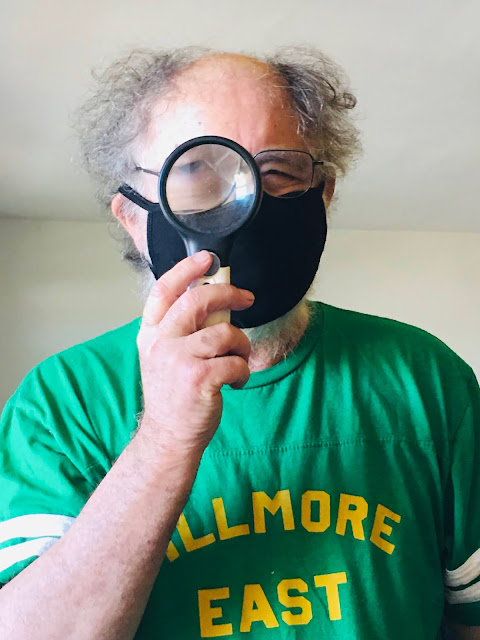He talks about his early life, 40 years as a book scout, and also his poetry writing. Nudel said in an interview:
“I’ve pretty much sold books to anyone who is anyone in the New York downtown scene… Andy Warhol, Susan Sontag, writer and actor Taylor Mead, artist Jim Dine (a pretty steady customer) the guy who plays Kramer (actor Michael Richards) in Seinfeld, TV newscaster Walter Cronkite (for ‘you, Walter, it’s 10 per cent off’ and rock star Patti Smith (a Rimbaud bio)”
Here is an interview with John Wisniewski
When did you begin writing, Harry?
Any poets who may inspire you?
What may inspire you to write?
I stared to write poems as a teenager, though I knew no poets. We lived in a lower middle-class Jewish neighborhood in the Bronx so our culture was basically stickball, basketball & football with some religious holidays thrown in. At my high school our English teacher, an intellectual Jesuit-- young devout Irish Catholic just finishing his PHD, took some interest in this dour, sullen shy-- almost friendless kid and asked me to a write a poem, maybe for the lit mag. He objected to the phrase "doors asway" since that wasn't a real word. Any way I said it didn't matter if it wasn't a word. I have been difficult ever since.
I've had a number of good teachers, John Logan, Paul Blackburn, but the greatest influence has been Robert Creeley. I heard him read at CCNY & followed that voice to SUNY BUFFALO where he taught. We became lifetime friends, with thus the usual fights in between, but I never wanted to have his voice, though I also write short poems, I've tried to disentangle myself from his influence. I think I have and I haven't. There was a conservative New.England streak in Bob & for some reason, beats me. I always wanted to be an underground Poet & I don't mean with the megaphone of St. Marks. Since I have hardly published anything, at least I've succeeded in that.
I'm not inspired, though when young alcohol and grass squeezed some poems out of me. They just happen and I'm just hopeful that they will keep happening. I don't write, I kind of trance them. I know this is pretentious, but it's all I got.
You've written a tribute to Ted Joan's. Could you tell us about him?
Ted along with Bob Creeley & Tuli Kupferberg were poetic father figures to me. Though my real father was my real hero. Each was so different, but I feel like these are the three parts of me that make a whole. Ted was a hustler charmer, creative at all moments, wanderer and though he didn't know it, lost soul. Ted was not a great poet like Bob, or with a Rabbinical sense of Justice like Tuli had but he was a great liver of life. He was a magnet, charismatic but not loud. I don't know how I lucked out and knew him, but as with all three of my Freudian Fathers I had my share of difficulties. which I guess was inevitable for me to become myself as a poet.
.
Any memories of Steve Dalachinsky?
Steve was Steve, he exemplified both the genius of autodidactism and its limitations. He could be both your best friend and your worst enemy in a long sentence. He was kind beyond belief & a weasel in sheep's clothing. He was loved best by those who knew him least, yet had an extraordinary passion for what he loved, Jazz, Po, Cinema which never wavered. I fully intend to make him a legend.
Do you have any new anthologies of your poems due out?
I'm hoping to do a little book of my writing and poems about this plague time, I'd like to do it soon, so it would be contemporaneous with the virus. I'm also diddling with someone to publish three poems of mine with some other poets in Tel A Viv mostly vanity but I want an imprint there. I want to see a photo of it in bookstore window in Israel.
You are a bookseller, could you tell us about this?
Had a Phd, without a job. One day I saw a catalog of a bookseller who was selling modern books at (for that time) big prices. I told myself I could find those books and the next day I took a walk and that's how it started 45 years ago. Steve Dalachinksy and I also sold books & records in front of my loft on Spring St in Soho for some 20 yrs. Of course, these are the basic facts and there were many permutations. I liked book selling, it was a clean exchange facilitated by money, poetry was a morass of publishers, academics, friends, neighbors, lovers. I’'ll publish you if you publish me, sex for hire, group therapy, cliques, cults, smoky bars, endless phone calls etc. I just wanted to make some money so I could write poems, but I will say, over the years, poetry and book selling, finding and researching, have become equal parts of my life.







































